Long Branch Hotels: Great Views
Magnificent seashore lodgings highlight city glory …
I’m endlessly fascinated by the magnificent seashore hotels that sprawled along the Long Branch coastline. These grand resorts that once blanketed the city’s oceanfront provide fabulous imagery — mostly from around the turn of the 20th century.
A natural “Bluff” along the Atlantic Ocean provided the spectacular setting for these massive wooden public palaces. The bigger, the better. It was an age when Long Branch was the nation’s greatest vacation destination and “mecca for the elite of the nation.” But all classes of citizens — presidents to peasants — enjoyed the shore scene back then.
The first hotel at Long Branch was opened before the 1776 Revolutionary War. “Fish Tavern” — located at Ocean and Cooper Avenues — was a simple two-story building offering food and lodging. It mostly hosted seashore visitors from Philadelphia who came by stage-coach. By 1792, it had new owners (Herbert and Chandler) and a new name (“The Shrewsbury”). According to The Story of the Jersey Shore by Harold F. Wilson (1964), The Allegheny House — a converted farmhouse at Broadway and Liberty Street — was the city’s largest hotel when it opened in 1846. James D. Wardell was the owner. It burned in 1866.
At the peak of the Long Branch resort craze, a visitor could get a room including four large meals for $4 per day at the best hotels. “Social, financial, industrial, political, and theatrical stars of the first magnitude swarmed” to the hotels, according to the Long Branch Daily Record. But then things changed like they always do. Many city hotels fell victim to declining patronage and sadly to devastating fire and storm damage. By June 1909, Daily Record publishers worried that a “lack of sufficient hotels is Long Branch’s one great deficiency.”
In their prime Long Branch hotel owners were powerful men — among them were Cooper, Howland, Price, Leland, Laird, and Hildreth. They were city mayors and commissioners, leaders in local commerce and pioneers in the hospitality business. Among the lost Long Branch lodging legends were the: Ocean Hotel, Stetson House hotel, West End Hotel, Metropolitan Hotel, Howland Hotel, Mansion House hotel, Hollywood Hotel, Price’s Hotel, Clarendon Hotel, United States Hotel, Elberon Hotel, Takanassee Hotel, Brighton Hotel, Scarboro Hotel, Pannaci Hotel, Vendone Hotel and Atlantic Hotel and many others.
It’s the sheer size of some of these places I can’t get over. Have a look:
In the beginning …
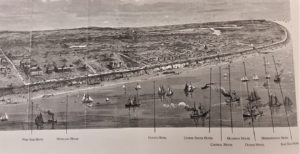
The Line-Up — Major hotels along the Long Branch coast, Harper’s Weekly, August 1873. Many of the grand hotels were “destroyed by a relentless succession of fire and fierce storms,” according to the late Monmouth County historian George Moss of Rumson.
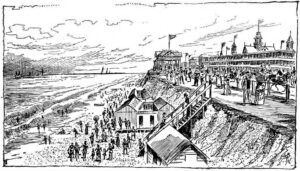
Long Branch seashore from “New Jersey Coast & Pines” by Gustav Kobbe, 1891. The Long Branch Hotel Men’s Association was formed in July 1922, according to the Long Branch Daily Record; Arthur Sussman of the Imperial Hotel was the first group president.
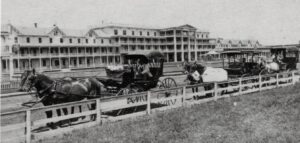
“The Granddaddy” — Leland’s Ocean Hotel in its glory, 1873. The hotel on the corner of Ocean Avenue and Broadway was the biggest in the country. Set along 700-feet of oceanfront, it could serve 5,000+ meals on a summer evening.
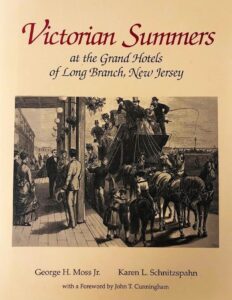
By the Book — For a keen perspective on the old Long Branch hotel scene get a copy of Victorian Summers at the Grand Hotels of Long Branch, New Jersey (2000) by George H. Moss, Jr. and Karen Schnitzspahn — HERE.
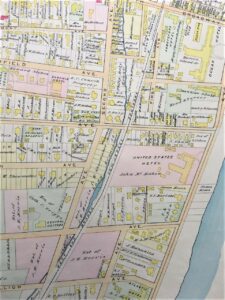
Hotel Line Up — Long Branch hotels along the ocean coast, Sanborn Map, 1889. Top-to-bottom: Ocean Hotel, Mansion Hotel, United States Hotel and Atlantic Hotel.
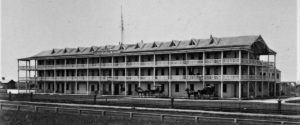
The Look — United States Hotel on Ocean Avenue, 1875. Long Branch hotels “followed a general pattern — large plain barracks with flat roofs and narrow porches, often in several tiers and inevitably fitted out with the gingerbread fretwork trimmings of the day,” according to New York Daily Tribune, August 1868. “In Long Branch a guest is shown ‘out’ to his quarters.”
Long Branch Hotels Still Operating …
Ocean Place Hotel
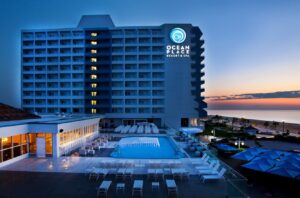
Spectacular Sunrise — Ocean Place Hotel, 2018 — MORE INFO.
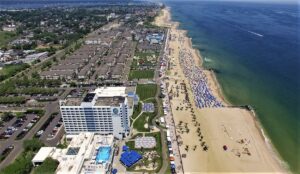
Big Picture — Ocean Place Hotel along the Long Branch coast looking north, 2019 (Will Bahamonde Photo).
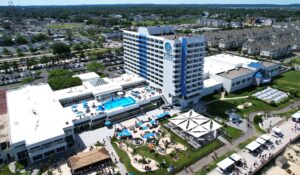
King Pin — Ocean Place Hotel, July 4th, 2022 (David Booth Photo). United Capital Corp. of Great Neck, NY acquired the hotel In February 2012 (assuming a $60 million mortgage on the 16-acre property just prior to bankruptcy). Previous owner Olympus Real Estate Corp of Dallas were owners since 1998.
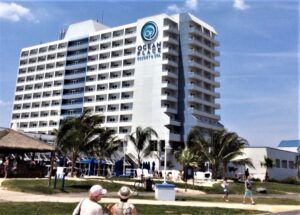
Historic Grounds — Ocean Place hotel, 2014. The hotel’s 16-acre grounds at the foot of Broadway had been President James Garfield Park until 1987.
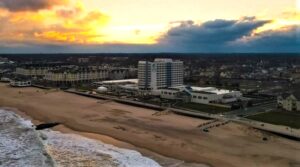
Setting Sun — Ocean Place Hotel, 2021. It’s “a gem among NJ beachfront hotels” — with room for 250+ guests.
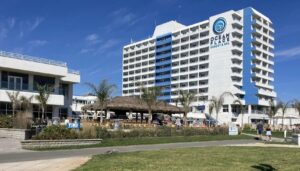
Beachfront Gem — Ocean Place Spa & Resort, Fall 2023 (Paul Crammer Photo). The hotel also enjoys “530 feet of uninterrupted beachfront access.”
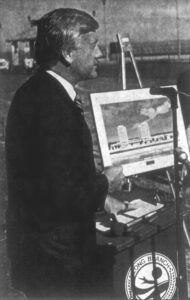
Digging In — Mayor Philip Huhn at ground-breaking ceremony for the new Ocean Place Hilton Hotel on Ocean Blvd, Red Bank Daily Register, November 1988.
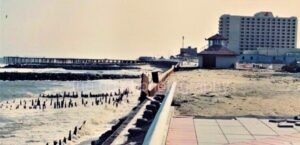
Big H — Ocean Place Hilton Hotel, 1994. Ground was broken for the landmark 255-room oceanfront hotel in November 1988. Developers — William J. Maloney, father and son — had acquired the property from the city for $1.6 million. The hotel opened for business in July 1990; Frank Gaynor was the first general manager.

Hotel Plus — Ocean Place Spa & Resort along the Long Branch promenade, August 2022. Today’s 12-story hotel offers 52,000 square feet of meeting/event space, private beach, two restaurants, fitness facility, spa, tennis courts and indoor and outdoor pools.
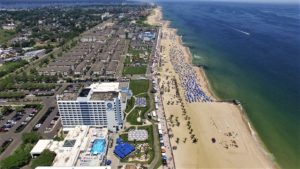
Down the Shore — Ocean Place Spa & Resort, 2019. Looking north to beach neighbors Monmouth Beach and Sea Bright
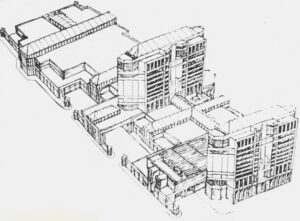
First Plan — Ocean Place Hilton sketch proposal. Red Bank Daily Register, October 1986. It included two towers and room for 450 guests.
Bungalow Hotel
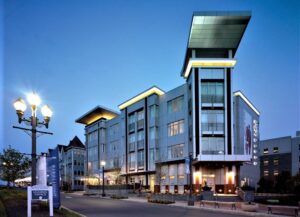
Coastal Cozy — Bungalow Hotel in Pier Village at Ocean Avenue and Laird Street, 2010s. Opened in May 2009, the 24-room boutique hotel was built by David Barry, president/owner of Applied Development Company which also built the Pier Village community — MORE INFO.
Wave Resort & Hotel
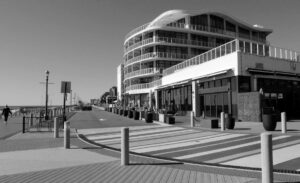
Smart Stay — The Wave Resort & Hotel on the boardwalk, 2022. Long Branch’s stylish oceanfront hotel was built by Kushner Companies. The 67-room boutique hotel in Pier Village opened in 2019. — MORE INFO.
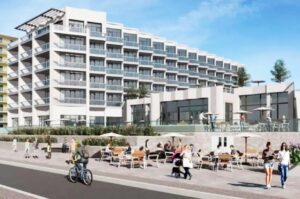
More to Come — Proposal for a second Wave Resort & Hotel on Ocean Blvd. In May 2022, the Long Branch City Council approved a plan for 107 rooms with spa and pool. Developer PV Motel, LLC also agreed to build an oceanfront park for the public.
Remembering Long Branch Hotels?
The place was “hotel city” in its day. While researching the history of Long Branch hotels, I found reference to many for which I could not locate images and or more info. These include the: Abbotsford Hotel, Hotel Abbett, Alleghany House, Allen’s Hotel, American Hotel, Avenel Hotel, Bath Hotel, Bennett’s Hotel, Broadway Hotel, Casino Hotel, Cavanagh’s Hotel, Commercial Hotel, Columbia Hotel, Continental Hotel, Colter House, Conover House, Dalton’s Hotel, Denyse’s Hotel, Dunbarton House, Dalton Hotel, Fern’s Hotel, Eagle Hotel, Eureka Hotel, Grand View Hotel, Germania Hotel, Globe Hotel, Hathaway House, Henderickson Hotel, Hertz Hotel, Keystone Hotel, Imperial Hotel, Italian Hotel, Kolb’s Hotel, Lawn House, Lawler’s Hotel, Liberty Hotel, Long Branch Hotel, McElhinney’s Hotel, Madison Hotel, Monmouth House, Murray’s Hotel, National Hotel, Nassau House Hotel, Park Hotel, Rhineland Hotel, Rohbeck Hotel, Sanger’s Hotel, St. Charles Hotel, St. Cloud Hotel, St. James Hotel, Senate Hotel, Suburban Hotel, Surf House, Stratton Hotel, Hotel Trenton, Third Avenue Hotel, Third Ward Inn, Trenton Hotel, Redmond House, Rhineland Hotel, Rockwell Hotel, Union Hotel, VanWoert’s Hotel, Victoria Hotel, Versailles Hotel, Waldorf Hotel, Wilson’s Hotel, Windsor Hotel. I’m certain there are many others!
Hotel Norwood
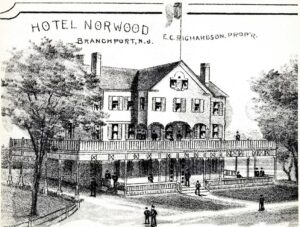
Hotel Norwood in Pleasure Bay, early 1900s promo. The main structure along the river was opened in the 1890s built by New York publisher, Norman L. Monroe.
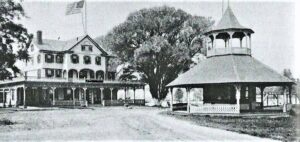
Hotel Norwood on Branchport Avenue, 1910s. Among the owners were: Frank Engelfried and Hermann Weschky.
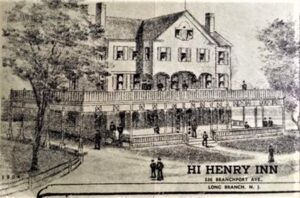
Hi-Henry Inn ad. Located on Branchport Avenue, it had been the Hotel Norwood. Henry Muhlenbrink (the “Squire of Branchport,” according to the Long Branch Daily Record) acquired the property in 1922 and re-named it after his unbeaten trotting horse, Hi Henry, in 1935. A successful horse driver and owner, he died in June 1952. John and Rose DeLuca ran the popular inn from 1955 to 1974. Born in Bayonne, John died in Feb. 1966.
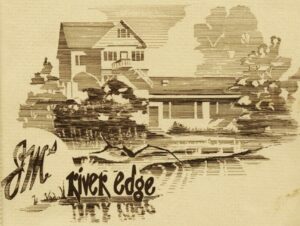
JM’s River Edge on Branchport Avenue, 1979. This Pleasure Bay location had been the Hi Henry Inn and Hotel Norwood in the past.
Avenel Hotel
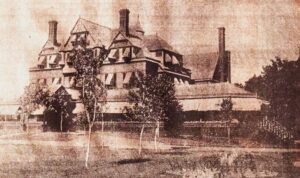
Avenel Hotel in Pleasure Bay, 1890s. Thomas Patten built the hotel in the 1890s; he also owned the Long Branch Steamboat Company. The 25-room hotel was renovated in 1911.
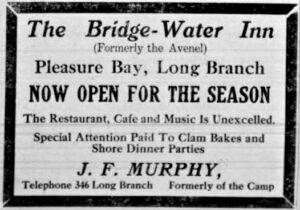
Bridgewater Inn ad. Long Branch Daily Record, June 1912. In May 1929, developer Frank Peregola bought the 14-acre Pleasure Bay Park (including the hotel then in “perfect condition”) paying $30,000. It was wrecked in July 1939.
Garfield-Grant Hotel
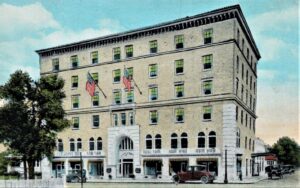
Garfield-Grant Hotel, 1920s. Opened in October 1925 at the corner of Broadway and 5th Avenue with 86 guest rooms (each with a bathroom and telephone) and six ground-floor retail storefronts. William Foor was the first manager.
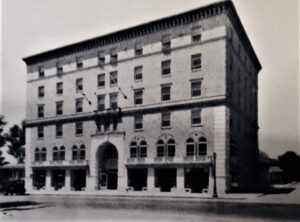
Garfield-Grant Hotel, 1940s. Named to honor two American Presidents who summered at Long Branch: James A. Garfield, who died in LB in 1881 and Ulysses S. Grant who summered here for over a decade starting in 1869.
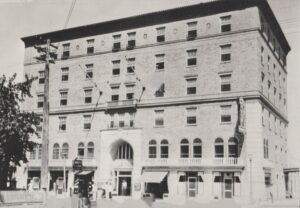
Garfield-Grant Hotel on Broadway, 1950s. The structure still stands today — used as business offices and the city’s municipal court. The Monmouth County District Court first convened here in September 1966 (the first lease was 5 years for $14,965).
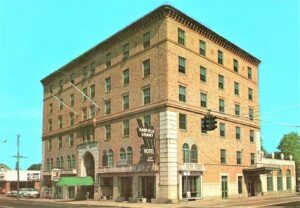
Garfield-Grant Hotel, 1958. Designed by renowned New York architect, William Van Alen (1883-1954), who is best known for his 1930 work on the classic NYC skyscraper, the Chrysler Building.
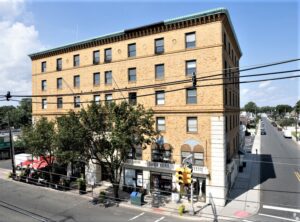
Garfield-Grant building, 2020s. As a hotel it struggled from the start — in January 1934 the original developer the Community Hotel Corp. went into receivership. Henry J. Shaheen and John F. Kiely bought the business in 1953, when it was a 70-room hotel with a bar and two dining rooms.
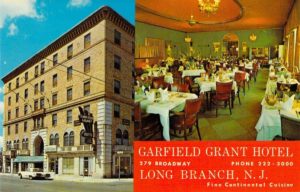
Garfield-Grant Hotel, 1960. The bar and dinning room closed in August 1965; hotel service ended in 1967.
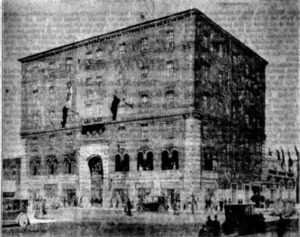
Garfield-Grant Hotel nearing completion. Long Branch Daily Record, September 1925. Construction cost on the six-story structure was $450,000. Cauldwell Wingate Company of NYC were the builders.
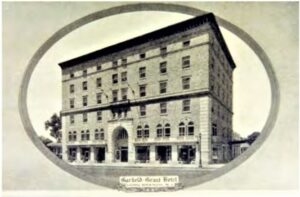
Garfield-Grant Hotel, 1920s. The yellow-brick, terra-cotta structure was “Italian Renaissance” design.

“Continental Room” at Garfield-Grant Hotel ad, Red Bank Register, June 1965. When first opened, the main dining room could accommodate 200 guests.
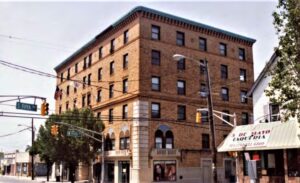
Garfield-Grant Hotel, 1970s. The Long Branch Daily Record reported in 1953, that the Garfield-Grant Hotel was a “community proposition” project — it was owned by a corporation composed largely of local residents. From 1937, it was called Garfield Grant, Inc.
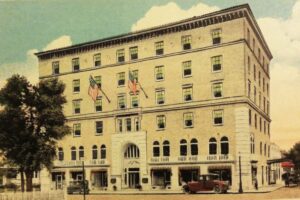
Garfield-Grant Hotel, 1920s. Ownership claimed it was the only completely fire-proof hotel in the country.
Takanassee Hotel
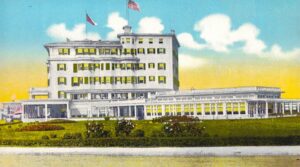
Takanassee Hotel in West End, 1930s. The 150-room hotel was on the corner of Ocean and Brighton Avenues.
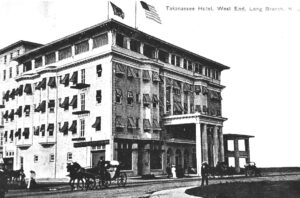
Takanassee Hotel, 1908. Built on the grounds of the old West End Hotel — “one of the most picturesque sites on the Atlantic Coast.”
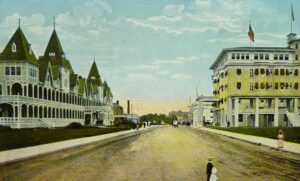
Takanassee Hotel (r) opposite the West End Cottages (l) on Brighton Avenue, 1910s — MORE INFO.
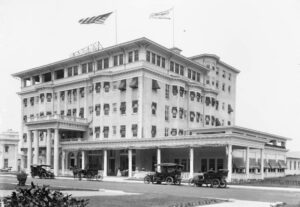
Takanassee Hotel, 1920s. Brighton Realty Company was the developer and Clarence D. Wilson was the architect. Former mayor Wilbur A. Heisley owned the land.
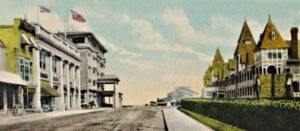
Brighton Avenue in West End looking east to Ocean Avenue, 1910. At left is the Takanassee Hotel and to the right are the West End Cottages.
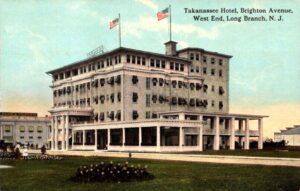
Takanassee Hotel in West End, Summer 1919. A hotel once “rich with history and glamour,” according to a Long Branch Daily Record editorial upon its demolition, October 1934.

Takanassee Hotel, Feb. 1907. The last of the grand oceanfront hotels in Long Branch. Opened in the early 1900s — it would be 40 years before another city hotel was built.
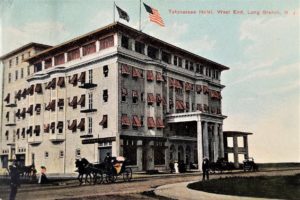
Takanassee Hotel, 1908. George Rainear acquired the hotel that year for $86,000 but former city mayor and circuit court judge Wilbur Heisley was the “silent” owner; he died in August 1934. Heisley moved to Long Branch the year be became a lawyer in 1879.

Takanassee Hotel on Brighton Avenue, 1910s. At far right is Huyler’s Candy Company store on Ocean Avenue.
Howland Hotel
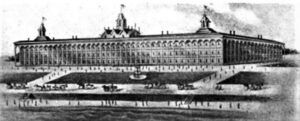
Howland Hotel on Ocean Avenue, 1903. Obadith Sairs built the original oceanfront structure in 1827 with 60 rooms. “Howland House” would be one of the longest lasting big hotels along the ocean.
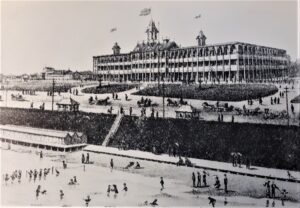
Howland Hotel in West End, late 1800s. Henry Wardell Howland took control in 1842, expanded operations to 400 rooms and ran the hotel generally with success until retiring in 1877. Born In Long Branch in November 1816, he was a father of nine. He died in Asbury Park in July 1897.
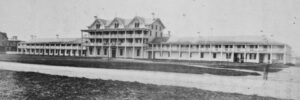
Howland Hotel, 1868. Richard Dobbins acquired the property in 1878. Among those to visit the hotel before the start of the Civil War, according to a January 1923 Long Branch Daily Record story, were Jefferson Davis, Robert E. Lee and John C. Calhoun — infamous Confederates all.
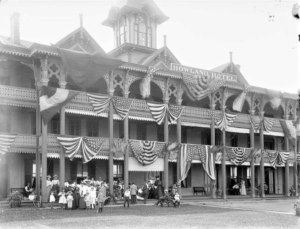
Howland Hotel, 1905. In 1906 the property was acquired by David Elinsky. A declining version of this would go up in flames in two separate fires, December 1912-January 1913.
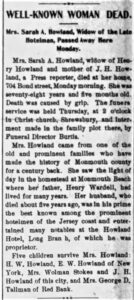
Sarah Howland obituary. Asbury Journal, March 1901. With a neat Long Branch-Monmouth Beach connection.
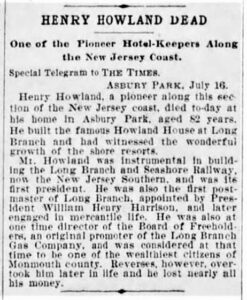
Henry Howland obituary. Philadelphia Times, July 1897. The hotel was considered a favorite summer spot for the “Philadelphia folks.”
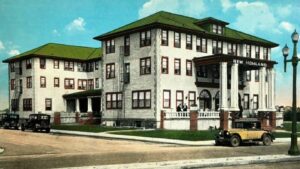
“New Howland Hotel” on the corner of Ocean and Avery Avenues, 1930s. It was re-opened in Spring 1926 by Ben Wolfson.
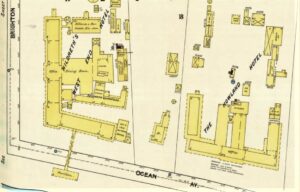
Side-by-side hotel giants along the oceanfront: West End Hotel and Howland Hotel, Sanborn Maps, 1890.
Price’s Hotel
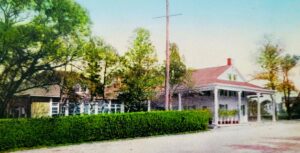
President’s Pick — Price’s Hotel at Pleasure Bay, 1920s. US Grant, his party and their four horses arrived at the hotel one summer afternoon and ordered luncheon, according to a 1907 Long Branch Daily Record story on Edward Price and his wife Ann. “The welcome was so hearty and the cooking so good” the couple’s fame quickly spread thanks to Grant.
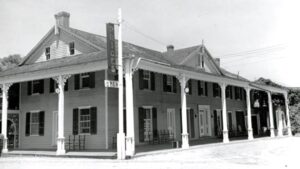
Price’s Hotel at Pleasure Bay, 1930s. Opened before the US Civil War, the landmark hotel burned in November 1953.
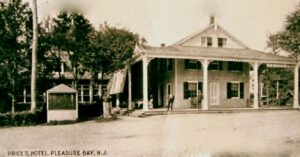
Price’s Hotel, early 1900s. By 1937, the 16-room hotel and restaurant were considered “the choicest spot in Jersey,” according to the Long Branch Daily Record.
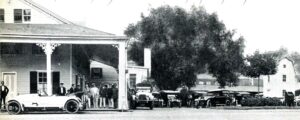
Price’s Hotel, 1917. The oldest hotel on the Shrewsbury River — when first established in 1854 it was called “Captain Price’s Kitchen.” A larger hotel went up in 1859.
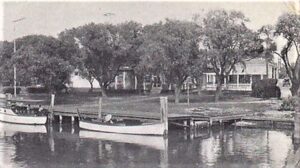
Price’s Hotel at Pleasure Bay, 1916. Born in Oceanport in May 1827, Captain Edward Hartshorne Price would become the “best known summer hotel proprietor on the Jersey Coast” before his death in February 1907. His wife and the mother of 10 children, Anna (West) helped run the business (her “shore dinners” and “clambakes” were very popular). She died in January 1898.
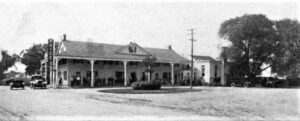
Price’s Hotel, 1910s. Frequently referred to as “a historic Shore landmark,” everyone from presidents to industrialists to actors visited. Presidents Grant, Harrison, Garfield and Wilson were all guests there.
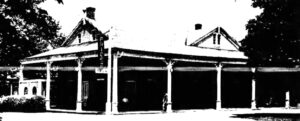
Price’s Hotel, 1950. In later years the hotel was run by Price family members, including William C. Price (who was born there). He was also a charter member of the Long Branch Ice Boat & Yacht Club which got its start there in 1901.
Scarboro Hotel
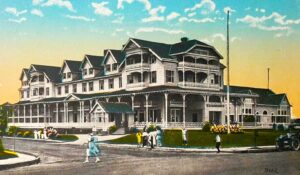
Scarboro Hotel, 1910s. The birthplace of Norman Mailer — Pulitzer-prize winning novelist — in January 1923.
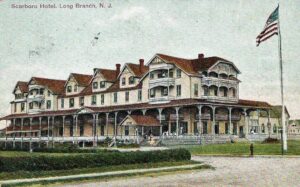
Hotel Scarboro on Ocean Avenue in West End, 1900. The land previously held the Bath Hotel built by James Green in 1837; it was burned in April 1867.
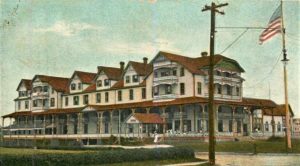
Scarboro Hotel, 1882. Using building remnants from the American Centennial Exhibition of 1876 (USA’s first official World’s Fair) held in Philadelphia, Richard J. Dobbins built a hotel on the Long Branch oceanfront. By February 1889, he sold everything to Richard Mears for $78,000.
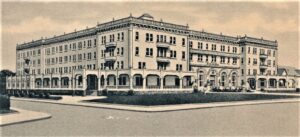
Hotel Scarboro postcard, 1935. By Summer 1923 the hotel was greatly reconfigured at a cost of $100,000. The “rambling porches” were removed and the building was “streamlined and stuccoed.” City architect Clarence D. Wilson did the re-design.
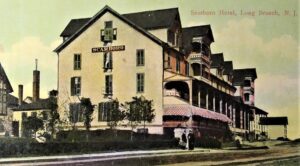
Scarboro Hotel, early 1900s. The 200-room, four-story hotel was located at Ocean and South Bath Avenues.
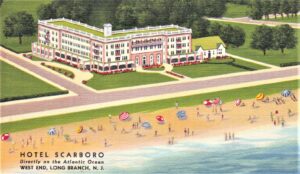
Hotel Scarboro postcard, 1920s. “One of the landmarks on the city’s beachfront,” Long Branch Daily Record, 1942.
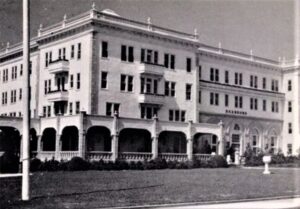
Scarboro Hotel, 1920s. Louis V. Kahn, who managed the hotel for over a decade beginning in 1905, believed that guests should get “all that’s coming to them and a little bit more.”

Scarboro Hotel, 1935. Louis and “Beck” Shapiro took control of the hotel in 1915 and made big changes — running the spot during summertime heydays for 30 years.
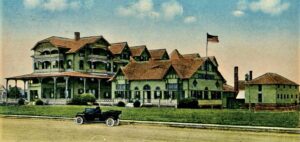
Scarboro Hotel, early 1900s. The Queen Anne-style hotel also had a fine restaurant and bar and offered ballroom dancing.
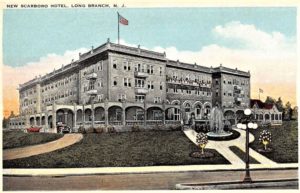
Scarboro Hotel, 1930s. When it mostly burned in September 1941, it was the last of the grand city hotels.
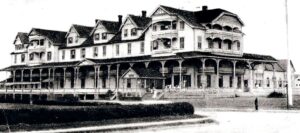
Scarboro Hotel, 1908. After a “mysterious fire” the city foreclosed on the property in 1945 and it sat in ruins along the oceanfront for about a decade.
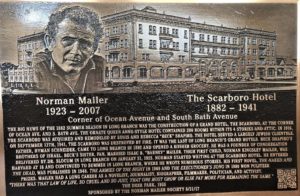
Norman Mailer — Scarboro Hotel plaque dedication, 2017. A city native and Pulitzer Prize-winning author, Mailer lived at the hotel, which was owned by his family. He started his writing career here at the shore.
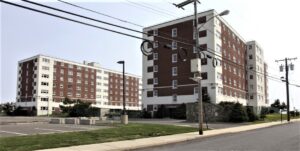
Seaview Towers — built on the old Scarboro Hotel property in 1954 and condemned in 2005 — it was demolished in April 2021. William Marlin, who built the twin towers, acquired the property for $10,000 In March 1953.
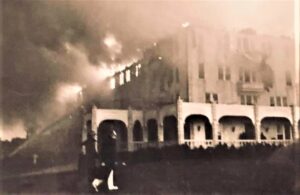
Scarboro Hotel on fire, September 1941. The last of the city’s “Grand Hotels.” The 200-room, Queen Anne-design stood at Ocean and South Bath Avenues. Opened in 1882 by Richard Dobbins, it went through several changes over the years. The family of famed author Norman Mailer owned the hotel.
United States Hotel
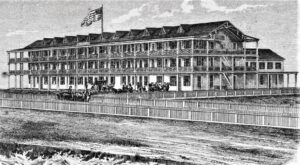
United States Hotel on Ocean Avenue, 1861. Built in 1852 by Frederick Kennedy & Isaac Crater; they sold their interests in 1856 to John Crater. It was also called “the Pitman’s House.”
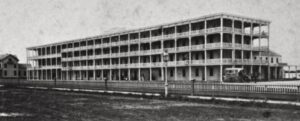
United States Hotel, 1875. Samuel Laird acquired the 300-guest, 13-acre resort in 1868. He also owned the nearby Mansion House hotel. By 1877, it was considered the “best furnished hotel at the Branch.”
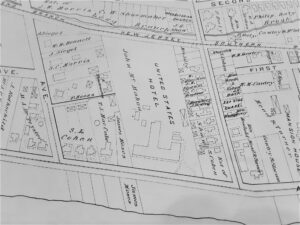
United States Hotel map, Atlas of Monmouth County, NJ 1889. The Ocean Avenue hotel was located between Morris and Chelsea Avenues,
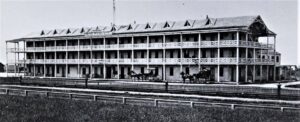
United States Hotel, 1867. When built it was: “an immense structure for its day.” — The New Jersey Coast in Three Centuries, 1902.

United States Hotel sketch, 1858. When the property went up for auction in 1902, the Catholic University of America was the owner. It sold for $82,000. The hotel was torn down in 1902 and the property was divided into 36 building lots the next year.
Ocean Hotel
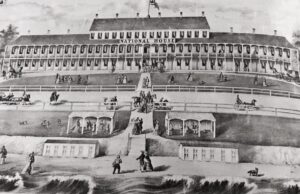
Many names in an amazing career — Here it was the National House, 1855. The hotel trade at the spot began in 1832 — with “Cooper’s House” which held 175 guests. The inn continued to grow and by 1855 it was called the National House. It grew more and became the mammoth Continental Hotel in 1866. And finally in 1872, it was the Ocean Hotel. Some 1,200 guests filled it rooms in peak summer seasons.
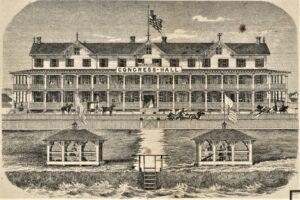
Congress Hall on Ocean Avenue, 1860s. The main section built by C.C. Sprague and H.A. Stokes opened in Spring 1866.
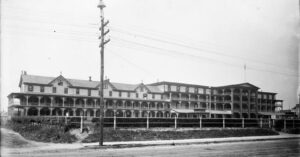
America’s Biggest Hotel — Ocean Hotel, 1900. Fronting on Ocean Avenue between Broadway and Laird Street.
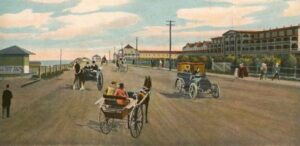
Long Branch coast looking south, Summer 1903. The Ocean Hotel is to the right. Note the horse-and-buggy and car mix but no modern transportation — before Ocean Avenue or a boardwalk.
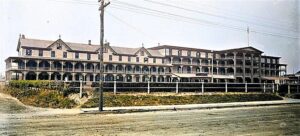
Ocean Hotel, early 1900s. Beginning as a farm house for Dr. Elisha Perkins in 1831 — it grew to be the largest hotel in the country as a new century dawned.
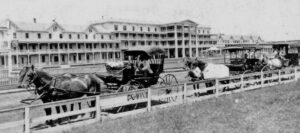
Ocean Hotel, 1873. “The Leland family is universally recognized as the most celebrated in their profession. They hold the position … by personal merit and ancestral prestige … as the leading member of the hotel-keeping business through the world.” —The Lelands and American Hotels by Augustus St. Clair, 1877 — MORE INFO.
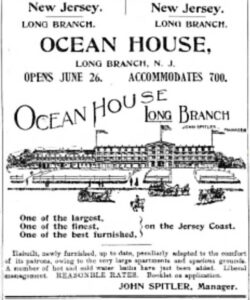
Ocean House Hotel ad, June 1897. Charles and Warren Leland, Jr. ran the operations. “We study to please!” was the family motto.
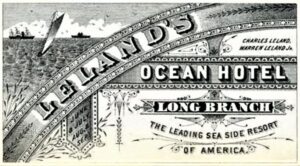
Ocean Hotel Advertising Trade Card, 1885. By 1877, “the immense proportions of the Ocean Hotel can only be realized by a personal view and inspection,” according to The Lelands and American Hotels by Augustus St. Clair.
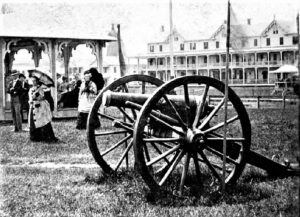
Leland’s Gun on the grounds of the Ocean Hotel, 1875. The cannon was fired upon the arrival of a ferry at the nearby pier. After years of success the hotel fell into decline and it was sold off in an 1891 foreclosure to Col. George Bliss for $68,000, according to the Shore Press. Warren Leland — who made and spent a fortune” — died in June 1893 at age 59.
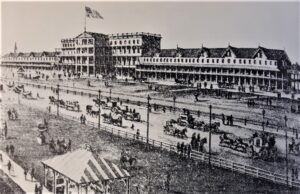
Ocean Hotel, late 1800s. In September 1902, owner Samuel Prosky skipped out on his debts and the hotel never reopened.

Continental Hotel, 1867. When completed the hotel was a combination of thee buildings which a oceanfront piazza that stretched for more half a mile.

Continental Hotel, 1866. The massive hotel and property set along Ocean Avenue at the corner of Broadway attracted huge crowds.
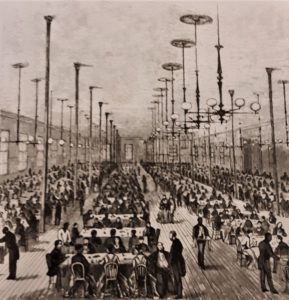
The Leland family took control in 1872 and made the hotel a success. Above is the massive hotel dinning hall (212 x 68 feet long with 29-foot-high ceiling) during that summer. It could accommodate up to 1,000 guests. The hotel employed 28 cooks and 150 waiters.
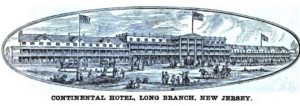
Continental Hotel, 1868. The hotel shut in 1903 and the city converted the area into a public park in 1905.

Continental Hotel, 1867. The hotel could accommodate up to 600 guests –with $5 per day a typical rate. It operated from June to September.
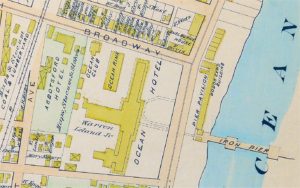
Ocean Hotel on a tax map, 1875. The large “Bar & Billiard” room was located in the south wing. The hotel also had a bowling alley, shooting gallery, barber shop, florist.
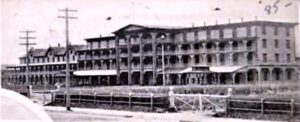
Ocean Hotel, 1895. After much prosperity, sold the business in 1891 with the closing of nearby Monmouth Park racetrack — signifying the end of an era in Long Branch.
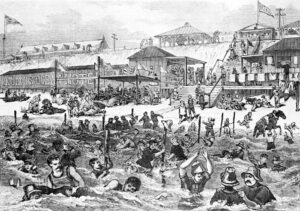
“Bathing Hour” at the Ocean Hotel, Harper’s Magazine, Summer 1877. Charles Leland is remembered for loving music and seeing that it was part of hotel culture — hosting 20-piece concert band performances usually on Saturdays. It wasn’t unusual for President Grant to drive up and “listen a little,” according to the Long Branch Daily Record in 1872.
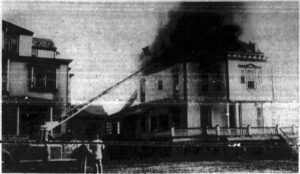
Hot Spot — Leeland Hotel on Ocean Avenue on fire. Long Branch Daily Record, April 1958. One of the family’s small city hotels.
Stetson House
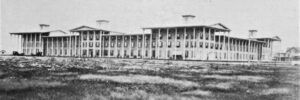
Stetson House hotel, 1868. The large structure was built by Cornelius Lane in 1832. It was the first hotel to cater to visitors with modest incomes.
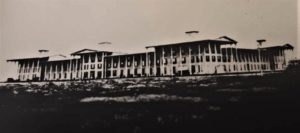
Stetson House. The first hotel at the shore to employ a band. Also first to have an elevator and telegraph service. President US Grant stayed here during his first Long Branch summer visit in 1869 and James Garfield liked to play billiards at the hotel.
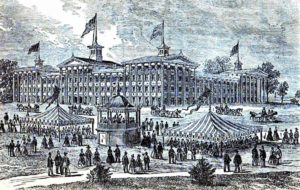
Stetson House hotel, 1880s. John V. Conover acquired the 50-acre property in 1834 and expanded to 175 rooms. He sold to Charles A. Stetson, Jr. in 1865.
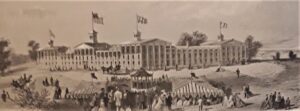
Stetson House hotel, 1867. One of the first images of this famous L-shaped hotel. It was sold and renamed the West End Hotel in 1870.
West End Hotel

Grand View — West End Hotel (r) and Hildreth Pavilion (l) along Ocean Avenue, early 1900s. Opened in 1867, it was torn down in 1906. Hosted to six American Presidents — the hotel was “considered the finest in the country,” according to the Asbury Park Press in 1910.
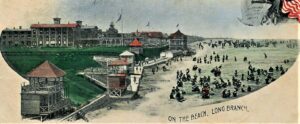
West End Hotel and beach area, 1906. In its prime the resort could accommodate up to 1,000 guests and had 450-member staff.
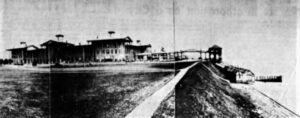
West End Hotel, 1903. By 1906, Judge Wilbur Heisley owned the property and he would build the new Takanassee Hotel on the site. Opened in July 1907, it cost $300,000.

West End Hotel (r), 1882. The hotel and cottages were run by father and son Walter and Morgan Hildreth for over 30 years. The family sold all its interest in March 1905 for $150,000.
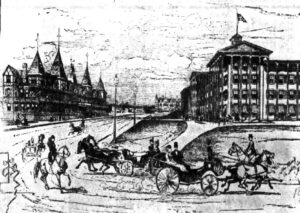
Scenes from West End, 1881. At right is the West End Hotel and left are the West End Cottages (7 were built in 1880). It all was lost in a December 1913 fire.
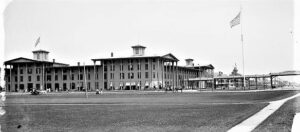
West End Hotel, 1900. It was the first summer hotel with a elevator and first to offer hot and cold running water in rooms.
Mansion House Hotel
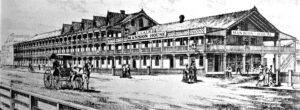
“Pioneer Hotel of Long Branch” — Before arcades and rides; before pool clubs and eateries. This prime Ocean Avenue territory between Chelsea Avenue and Laird Street once held the fabulous Mansion House hotel. Begun as a modest boardinghouse in 1846 by Jacob W. Morris, it grew to a 600-room shore showplace that hosted the nation’s elite (Mary Lincoln and US Grant were summer guests). Badly damaged in a December 1884 fire, it was torn down in 1910 to build the new pier.
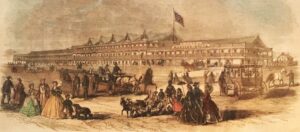
“Our Summer Watering Places” — Laird’s Mansion House hotel, Frank Leslie’s Illustrated Magazine, July 1865.
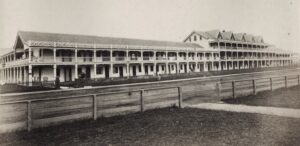
Big Deal — The Mansion House hotel on Ocean Avenue, 1868 (it’s now Pier Village). Samuel Laird took control of the 14-acre property and hotel in 1856 and expanded the business.
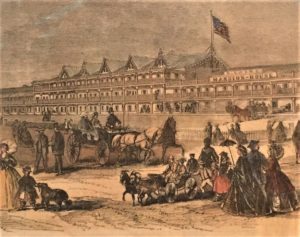
Mansion House sketch, 1863. The seaside hotel was considered the finest of its day. First Lady Mary Lincoln and her sons stayed here in grand fashion in August 1861. According to legend, John Wilkes Booth was a regular guest here and planned the president’s assassination at this hotel.
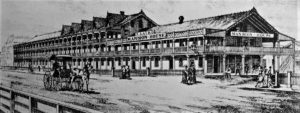
Mansion House hotel, 1870s. After a December 1884 fire badly damaged the hotel, it was finally torn down to make way for a new pier in 1910 (George Gold owned the land).
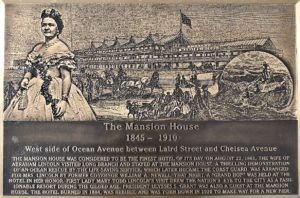
Mansion House hotel location marker, 2011. Mrs. Lincoln’s Long Branch visit as the summer was ending: “gave a stamp and tone to the place which it will never lose,” according to the New York Herald Tribune, August 1861. She so enjoyed her time at Long Branch she recommended it to the Grants.
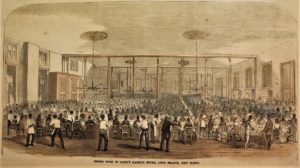
Mansion House dining room, 1865. H.E. Gawtry and W.L. McIntyre owned the hotel when it burned in 1884.
Clarendon Hotel
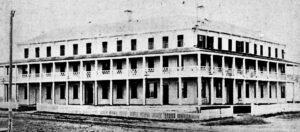
Clarendon Hotel, 1860. The original structure, the Land’s-End hotel, was built by Richard Wardell in 1808. Hugh Manahan took control in 1835 and expanded the hotel; he sold to Enoch Hendrickson in 1858.
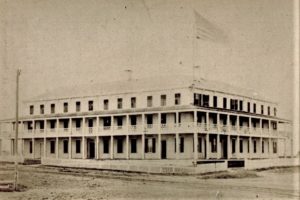
Clarendon Hotel on the ocean, 1868. It stood on the southwest corner of Ocean Avenue and Broadway and could host 150 guests. Later called the Ocean Wave Hotel, it was torn down in 1906.
Victoria Hotel
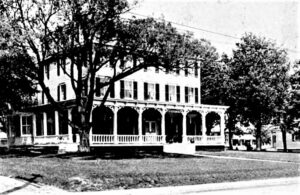
“The Victoria” at 88 Second Avenue, 1909. The 28-room guest house was opened by E.L. Reynolds in 1901 and later run by Ted Gaskin in the 1930s.
Elberon Hotel
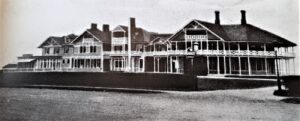
Elberon Hotel. Built by Charles Franklyn and Lewis B. Brown in 1876; it was wrecked in a November 1914 fire.
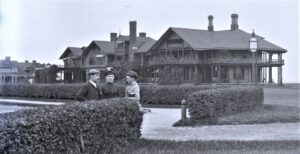
Elberon Hotel, 1889. Owner Louis B. Brown is credited as the key developer of the Elberon section of Long Branch.
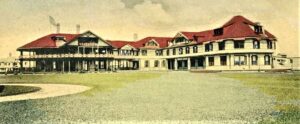
Elberon Hotel, early 1900s. President and Mrs. Garfield were said to have loved this spot and spent many pleasant days there.
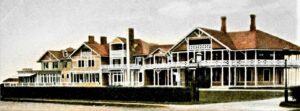
Elberon Hotel, early 1900s. (Edward Thomas Collection). Former US Senator James Smith, Jr. (D-NJ) bought the property in 1904 for $87,000.
New York Hotel
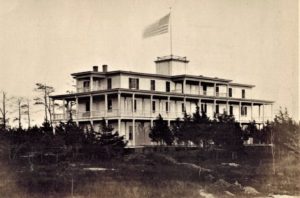
New York Hotel. Built in 1867 by Isaac Cooper along Branchport Creek. By 1873 the hotel was called the River Side House.
Metropolitan Hotel
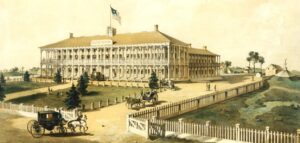
Metropolitan Hotel, late 1880s. Built by Samuel and Joseph Cooper in 1854 and expanded in 1866. Dr. Arthur Conover took ownership in 1874; the hotel burned in April 1876.
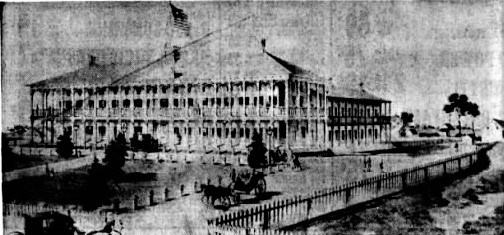
Metropolitan Hotel. The 12-acre resort hotel — located at Cooper and Ocean Avenues — could accommodate up to 600 guests. Rates were $25 per week.
Brighton Hotel
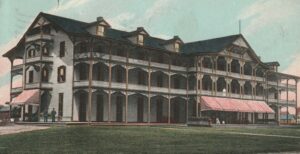
Brighton Hotel on Brighton Avenue, 1908.The Metropolitan Hotel had stood on the grounds until it burned in 1876. Dr. Arthur Conover did the rebuilding.
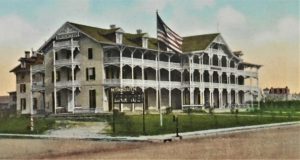
Brighton Hotel, 1910. Also known as the the Ambassador Hotel, it burned in January 1929 and was rebuilt.
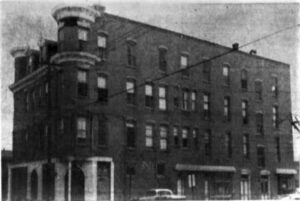
Bel-Air Hotel on Brighton Avenue (previously the Brighton Hotel) just before it was torn down in March 1965. Harry Barsamian had acquired the hotel in 1953.
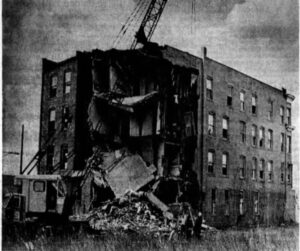
The Bel-Air Hotel in West End (previously the Brighton Hotel) is torn down. Long Branch Daily Record, March 1965.
Central Hotel
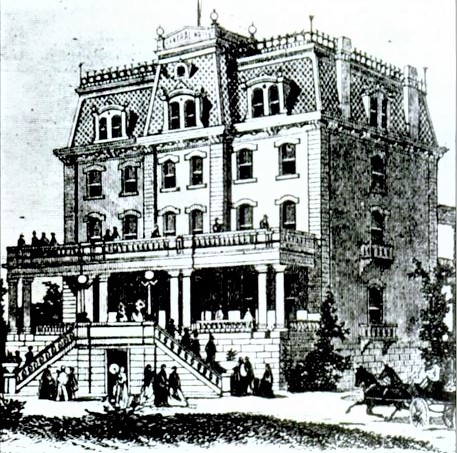
Central Hotel on Third Avenue. Built in the 1870s, it later became the beginnings of Monmouth Medical Center.
Venetian Inn
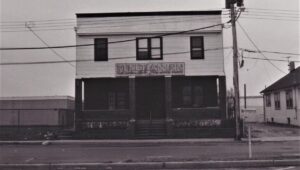
Venetian Inn on Laird Street, 1960s. It opened as a hotel and restaurant in 1927, it had been the Ocean Park Hotel. It later became a Monmouth College dorm and finally burned in October 1975. Italian-born Frank Leo, Sr. was the longtime owner before selling in 1950.
Hotel Pannaci
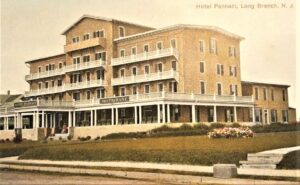
Hotel Pannaci on Ocean Avenue near Bath Avenue, 1908. Italian-born Gernando Pannaci acquired the hotel in 1898 for $41,250 and ran it until his death in April 1923. He was the grandfather of the late Monmouth County historian and author George Moss.
Hollywood Hotel
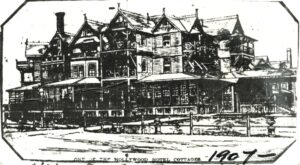
Hollywood Hotel sketch, 1907. The original hotel was built by John Hoey in 1882. He was president of the Adams Express Company.
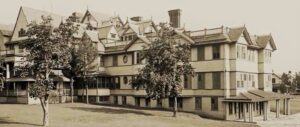
Hollywood Hotel, 1902. The legend is that the community near Los Angeles, California was named after the Long Branch area and hotel.
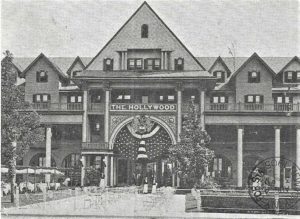
Hollywood Hotel, 1905. Wrecked by one major fire in July 1926 (started by a firecracker), it was rebuilt. Only to burn again for good in March 1961. At the time of both fires, the hotel was undergoing major upgrades.
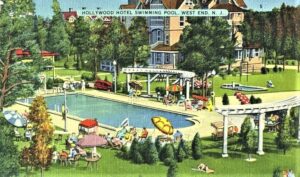
Hollywood Hotel pool area, 1930s. According to a 1926 Long Branch Daily Record story, the pool (with 427 x 212 dimensions) opened in July 1890 and was “the first of its kind ever constructed along the Jersey Coast.”

Hollywood Baths, part of the Hollywood Hotel in West End, 1905. The first Hollywood Baths were opened on July 4, 1890 by John Hoey and shut in 1930.
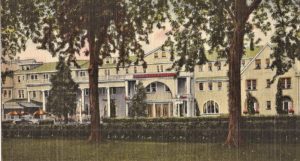
Hollywood Hotel, 1946. The hotel was acquired by RST Reality Corp (Irving Cohen was president) in 1951.
Atlantic Hotel, East End Hotel, and Arlington House
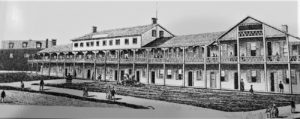
Atlantic Hotel in North Long Branch. Built by Aaron Christeller in 1862; the hotel could accommodate 250 guests. The area is now Seven President’s Park.
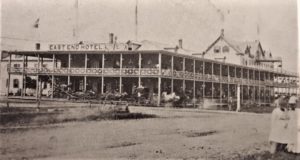
East End Hotel in North Long Branch. Built by Jay Gould and Jim Fisk, it opened in June 1872. Sometimes the place was called the “Grand Excursion House.” A pier and train depot were also built nearby. The area is now Seven President’s Oceanfront Park.
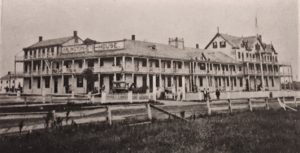
Arlington House hotel, 1879. Hit by a major storm in 1880, the doors shut in 1881. John Hoey bought the property and used the lumber to build the Hollywood Hotel. Later, Nate Salisbury would built “The Reservation” on the property. The area is now Seven President’s Park.
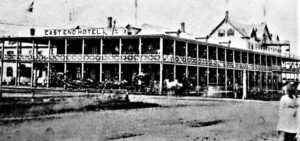
East End Hotel in North End, 1883. Opened in June 1872 by Jim Fisk and Jay Gould after major renovations and improvements, it was a total flop. By 1881, hotel operations had ended. “Jubilee Jim” Fisk — a textbook “Gilded Age Robber Baron — ran away from home as a teen, trained as a carnival barker, peddled from wagons around New England, and spent the Civil War in London where he made a fortune shorting Confederate bonds. In 1869, he and Gould had tried to corner the gold market. They had the same success as with the hotel in North End. Apparently, Fisk didn’t live to see the hotel open — he was murdered amidst scandal in January 1872. Gould cried at his partner’s deathbed in NYC. Born on April Fools’ Day, Fisk was just 36. In 1900, “The Reservation” colony was developed by Nate Salsbury on the property. Since 1977, Seven Presidents Oceanfront Park has held the grounds.
Florence Hotel
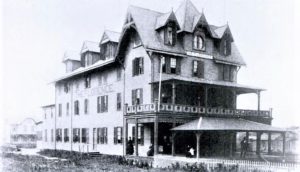
Florence Hotel on Ocean Avenue. Built in 1879 by Richard Dobbins, it later became the Star Hotel. It had 44 guest rooms and was owned by Woehrs and Strause families. Annie Oakley was a frequent guest here. By May 1935 it was condemned and torn down.
Greene’s Hotel
Lenox Hotel

Lenox Hotel, 1905. Located on the corner of Ocean Avenue and Broadway. In August 1916, Bryan Kennelly sold it to John Wilson for $10,500.
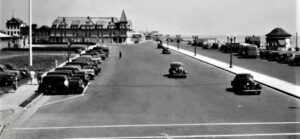
Lenox Hotel at Ocean and Broadway, 1937. By March 1947, Stanley Budnick was the owner with plans to create a modern hotel.
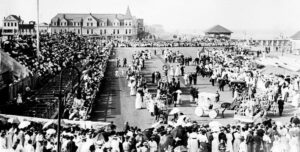
Long Branch Carnival in Ocean Park at the corner of Ocean Avenue and Broadway, early 1900s. The Lenox Hotel is in the background.
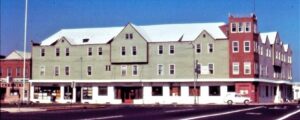
Corner of South Broadway and Ocean Avenue, 1978 (Dan Hennessey Photo). The spot had been the Wilson Hotel run by John W. Wilson who also owned the Lennox Hotel at that location.
Dalton Hotel
Manahassett Hotel
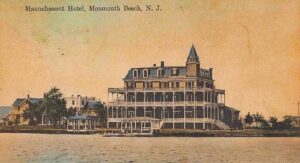
Manahassett Hotel, 1905. The Manahasset Park Association had begun development of the area in 1894. William Wolter owned the hotel prior to WW I.
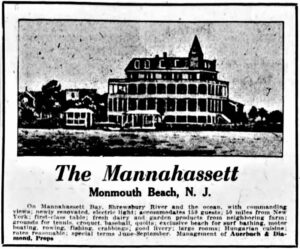
Brooklyn Daily Eagle ad, June 1920. The 42-room hotel was really in North Long Branch. The two previous owners dating back to 1911 were Anna Levine and Peter A. Walters.
Hotel Phelando
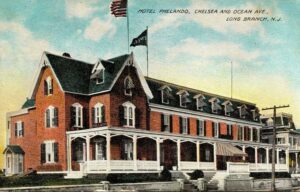
Hotel Phelando, 1912. The hotel had 150 guest rooms, a 250-seat restaurant, and large piazza — that offered a “commanding view of the ocean.” Clarence D. Wilson designed the $20,000 hotel.
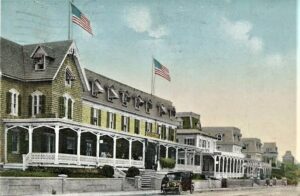
Hotel Phelando at Chelsea and Ocean Avenues, 1921. George Poland, a former Long Branch Board of Trade president, built the hotel just opposite Cranmer’s Baths.
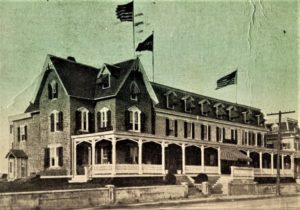
Hotel Phelando, 1911. Opened in June 1909, expanded in 1912, the hotel was condemned by the city in 1934 and demolished in 1936.
Hotel Ocean Plaza
Newing’s Hotel
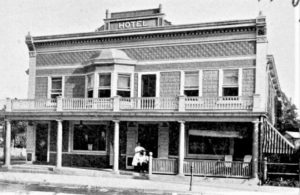
Newing Hotel on Broadway near Norwood Avenue, 1909. Archie Newing, a city commissioner, ran the place for years. The hotel closed in 1922 and was made into separate businesses.
St. James Hotel
Imperial Hotel
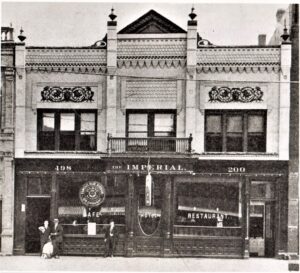
Imperial Hotel & Grill at 200 Broadway, 1909. (Long Branch Public Library Photograph Collection). The hotel was opened in 1898 by Prussian-born Berthold Sussman and sons.
Hotel Garofalo
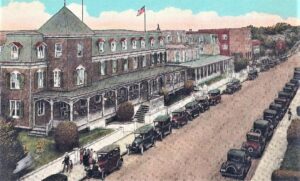
Hotel Garofalo on Chelsea Avenue, 1930s. The spot catered to Italian-American guests. Prior to 1913, it was the Marlboro Hotel run by Jacob Prown.
Manhattan Hotel
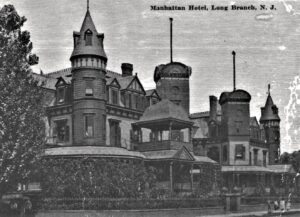
Manhattan Hotel on Chelsea & Second Avenues, late 1800s. It’s the same footprint of Phil Daly’s houses. (Long Branch Public Library Photograph Collection).
Fucci’s Hotel
Atlantic Hotel
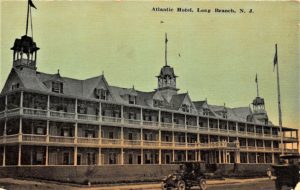
Old Atlantic Hotel, 1911. Known as the “Pavilion Hotel” when first opened by Samuel Morris and Isaac Levy in 1851. Richard Dobbins acquired the property in February 1879 and renamed it the Atlantic Hotel.
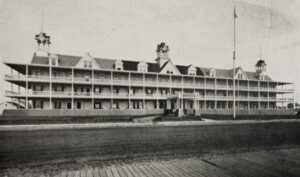
Atlantic Hotel on Ocean Avenue, 1908. Simon Glaser acquired the West End property in 1907 for $18,000.
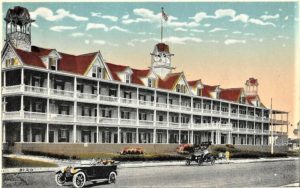
Atlantic Hotel, 1921. Located on the corner of Ocean and Morris Avenues, it was badly damaged in an August 1925 fire.
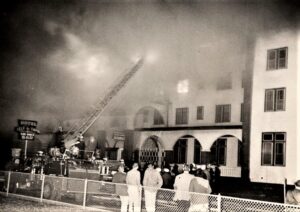
The Atlantic Hotel (then called the Isle de Capri Hotel) on Ocean Avenues goes up in flames, April 1959. Charles Massa owned the 100-room beachfront hotel at the time. (LBFD Photo).
Taft Hotel
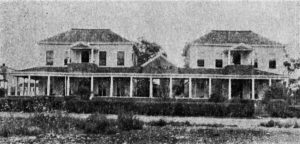
Taft Hotel on Cooper and Grant Avenues, 1910. It burned down in Sept. 1945. Louis Silk ran the hotel.
Rothenberg’s Hotel
Hotel Milborne
Vendome-Plaza Hotel
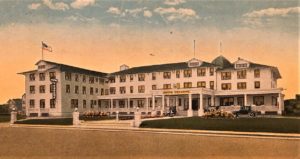
Vendome-Plaza Hotel, 1924. Opened in 1920, the three-story hotel at Ocean and Avery Avenues was badly damaged by fire in July 1962.
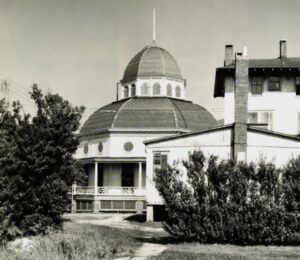
Vendome-Plaza Hotel, 1940s (NJ State Archives Photo). The dome previously sat on top of the New York Club — a gambling house run by Phil Daly.
Bridgewater Inn
Wardell’s Hotel
American Hotel
Landmark Hotel
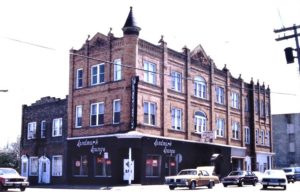
Landmark Hotel at Five Corners, 1970s. It all started as the Columbia Hotel built by Joseph H. Flanigan in 1896, a committeeman when Long Branch was part of Ocean Twp (he died in 1911). Later on it became the Landmark Hotel.

Landmark Hotel & Cocktail Lounge front, 1987. Then owned by Bob Pichi and Cyril Meyers, it was later commended by the city and torn down in 1995.
Long Branch Motels …
North End Motel
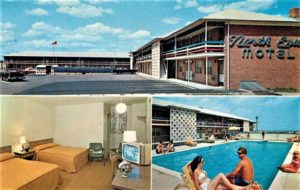
North End Motel postcard, 1963. The 14-unit efficiency apartment complex on Ocean Avenue and Avenel Blvd opened in June 1962. The builder was Ernest Caprio, Jr.; construction cost was $90,000. The motel was torn down in November 1988 to make way for the Beachcomber Towers.
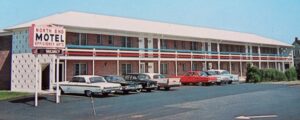
North End Motel, 1960s. Opened in June 1962 and torn down in November 1988, it’s now the 24-unit condo Beachcomber Towers.
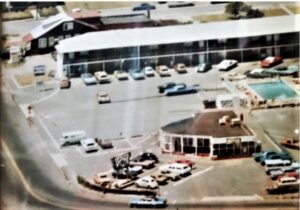
Peddler Bike Shop, North Long Branch Motel and the Red Barn bar (l to r), 1973. Approved in November 1962 as North End Apartments, it included 14 efficiency apartments and 8 motel units in a two-story brick building. Ernest Caprio was builder and Frank Amodio was architect. Construction cost was about $104,000, according to the Long Branch Daily Record.
Fountains Motel
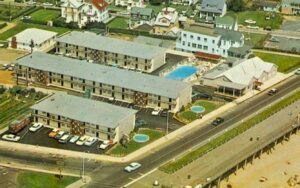
Ocean Views — Fountains Motel, 1960s. F. Bliss Price acquired the property in 1964 and ran it until 1970. This city native and 1920 Chattle High School graduate was the longtime mayor of Eatontown (from 1948 to 1960). Quite the local dynamo, he played college baseball at Columbia with Lou Gerhig, earned a night law degree in 1939, served as a US Navy officer in WW II, and was mayor when the Monmouth Shopping Center opened in 1960. He died in November 1978.

Price’s Fountains Motel of Long Branch, 1960s. Opened in August 1960 at Ocean and Morris Avenues, developer Michael Stroukoff and sons invested more than $500,000 in the project, according to the Long Branch Daily Record. Spread among four buildings were 112-units, a 300-seat restaurant and pool. Westervelt Stagg was the first general manager. The Russian-born Stroukoff had a degree in aeronautical engineering. The motel was part of a late 1950s city oceanfront rehab effort where three stylish motels when up along the coast — The Adventurer (1959), The Fountains (1960) and The Diplomat (1961). Back then summer room rates ranged from $12 to $30 per night on weekends.
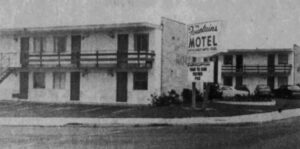
Fountains Motel, Red Bank Daily Register, July 1975. A very popular nightclub in its day with quality bands performing. For awhile it was home to the “Gang Plank” lounge. Jay Patel bought the property in 1977 and ran it until October 2005 when the decaying 148-room motel was torn down.
Nautilus Motel
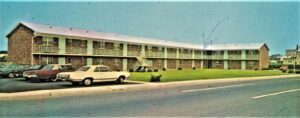
Nautilus Motel in West End, 1970s. The 22-unit Ocean Blvd. complex opened in 1968. Today, the spot is the Nautilus Condominium.
Adventurer Motel
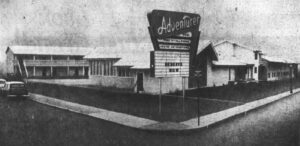
Adventurer Motel, Long Branch Daily Record, May 1959. “Long Branch first beachfront motel” at Ocean and Bath Avenues was developed by Frank Montemurro for $500,000. It included 78-rooms, pool, The Planet Room restaurant and Oval bar seated 250. It became the New Castaways Motel in May 1969 and had links to organized crime before it was torn down in 1974.
North View Motel
Stef’s Court Motel
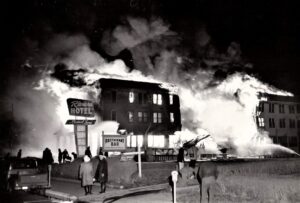
Riviera Hotel on fire, November 1956. City firefighters can only watch as a “swift and suspicious” blaze takes the hotel at Ocean and Morris Avenues. The three-story hotel with restaurant and bar was undergoing renovations and vacant at the time. In June 1954, Newark nightclub owner Paul Pugliese paid $100,000 for the 57-room hotel. Fred Lizza was a previous owner. Later the Stef Court motel was built on the land.
Ocean Court Motel
Beachcomber Hotel
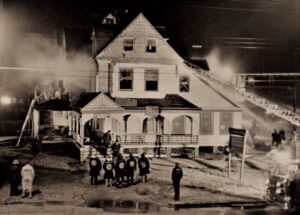
Beachcomer Motel in North End on fire. February 1964. Located at Ocean and Atlantic Avenues, it was unoccupied at the time and Dr. James Tsigounis was the owner.
Gambling Clubs
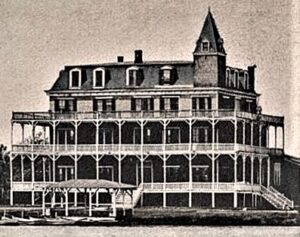
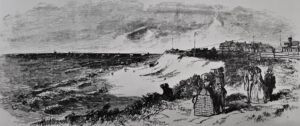
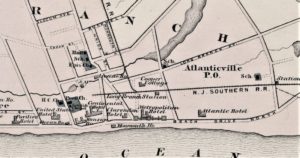

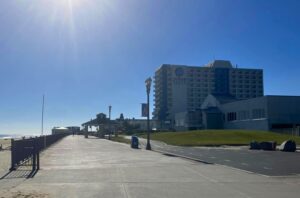

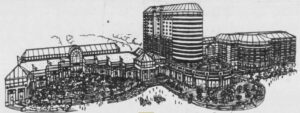
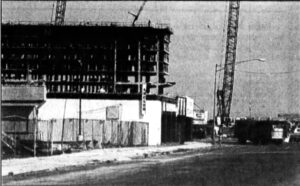
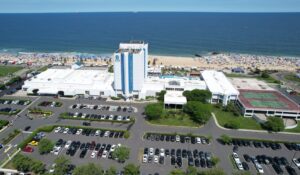
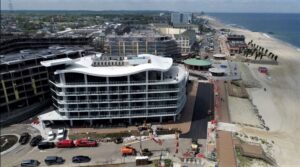
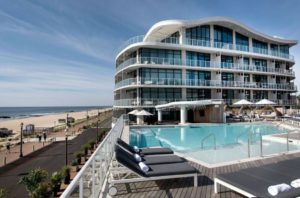
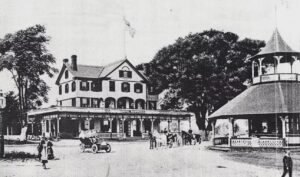
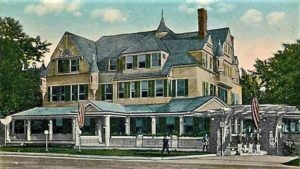
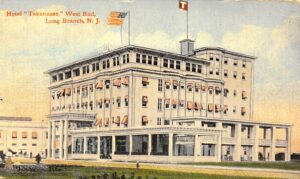
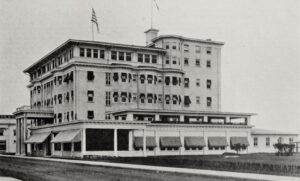
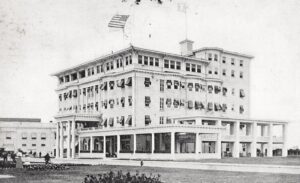
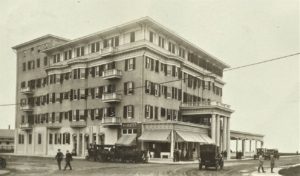
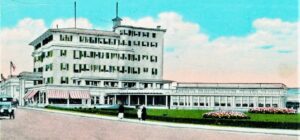
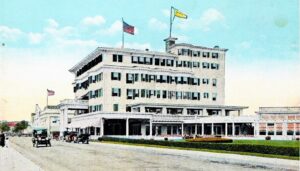
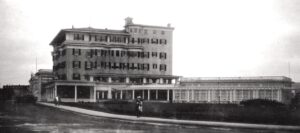
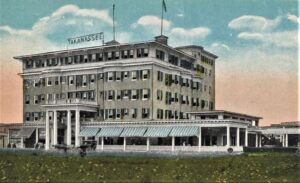
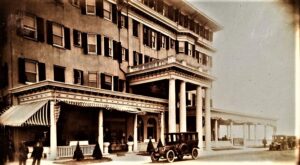
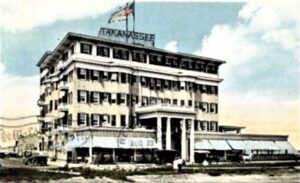
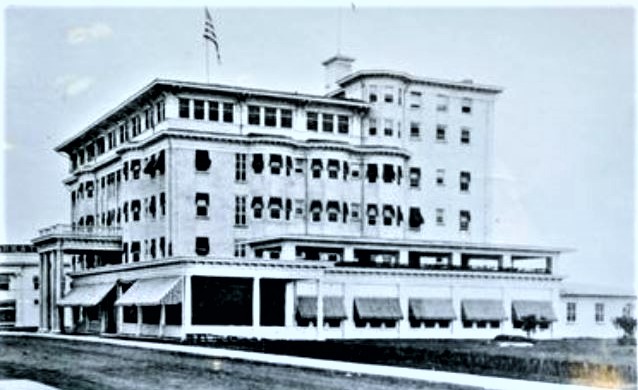

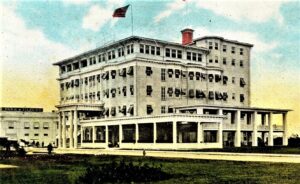
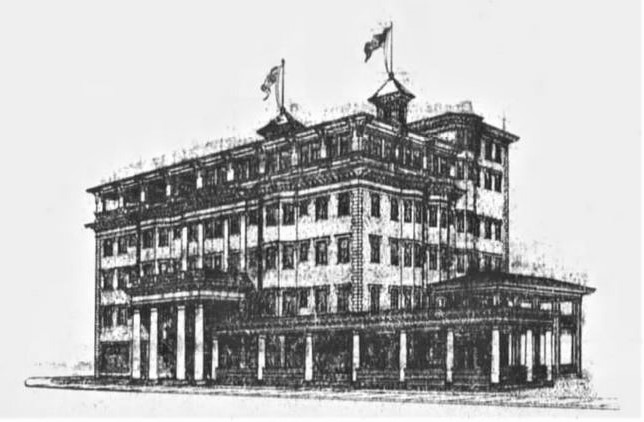
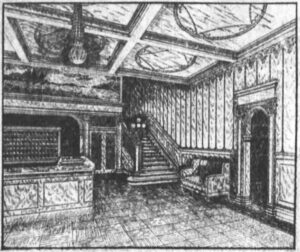
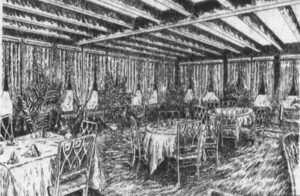
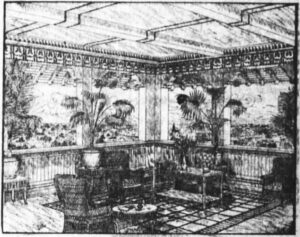
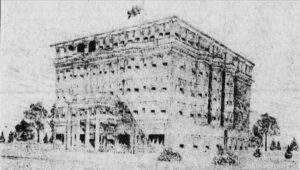

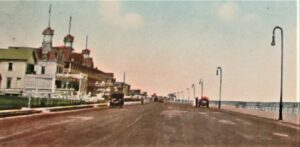
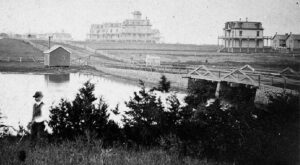
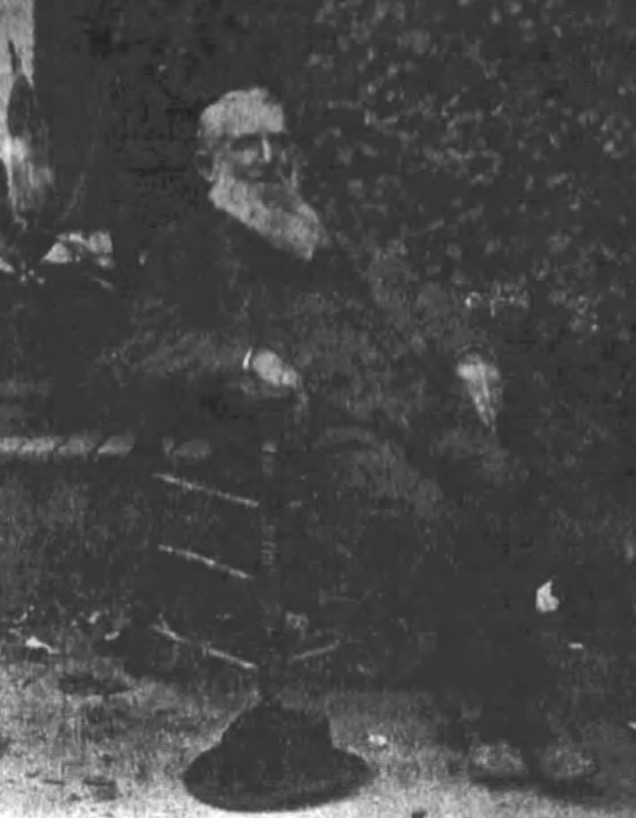
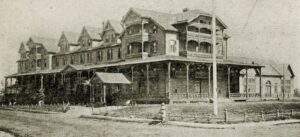
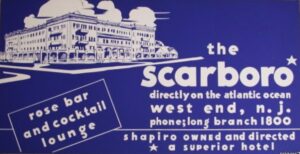

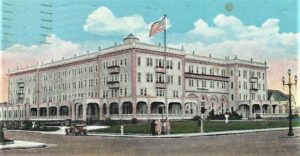
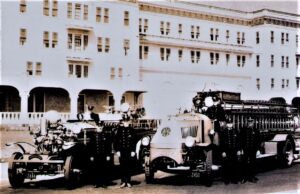
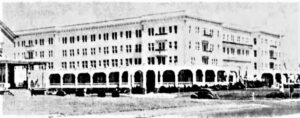
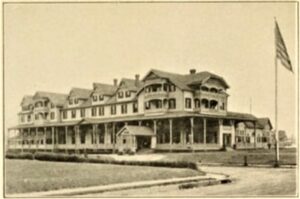
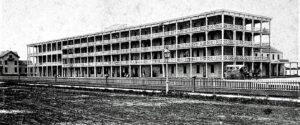
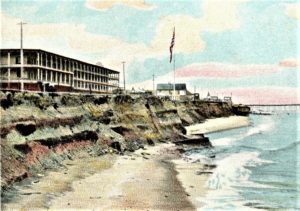
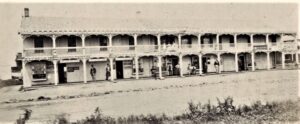
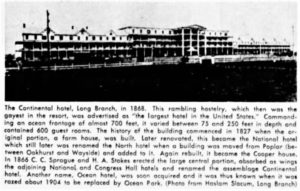
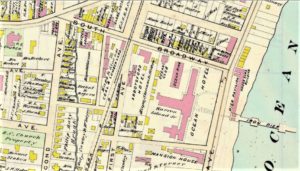
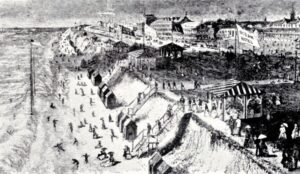
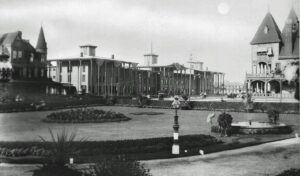
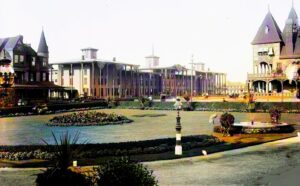
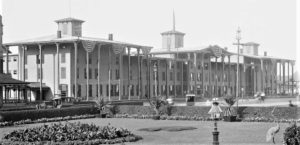
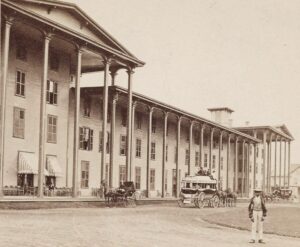
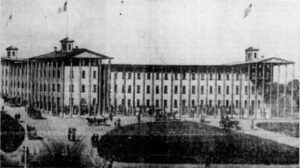
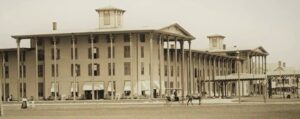
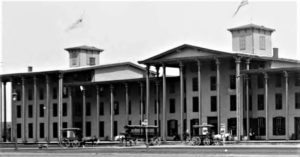
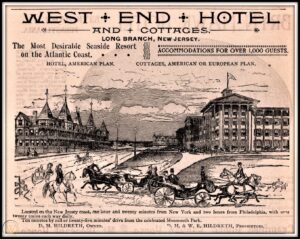
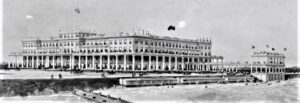
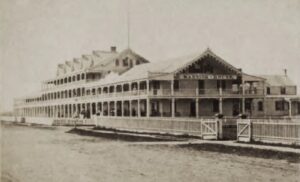
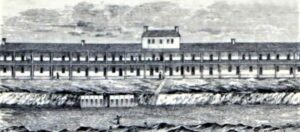
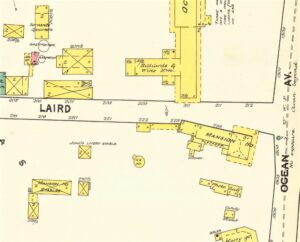
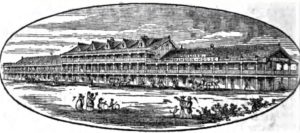
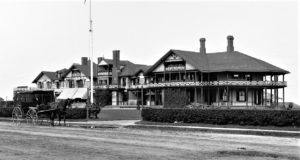
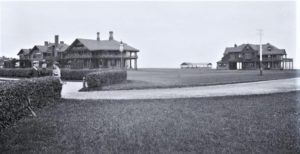
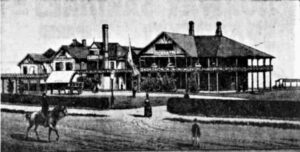

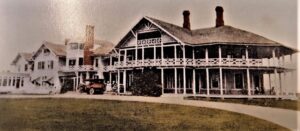

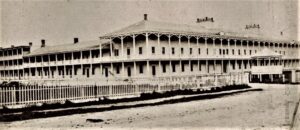
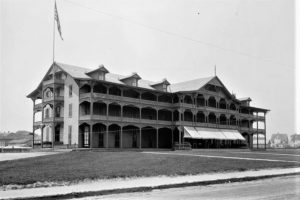
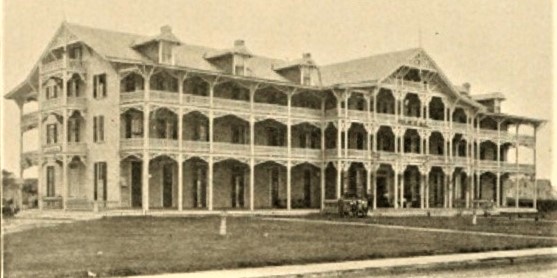
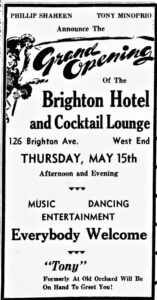
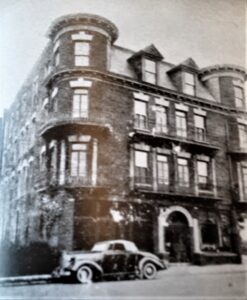
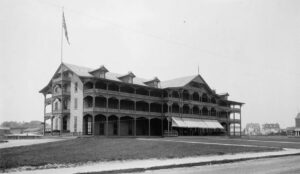
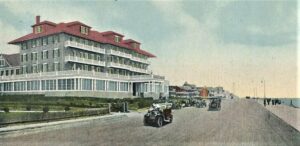
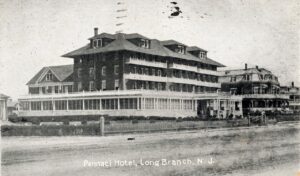
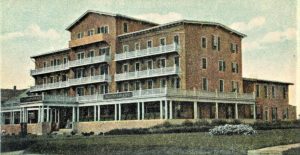
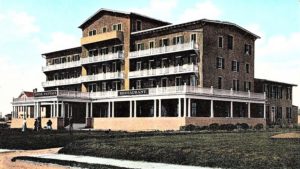
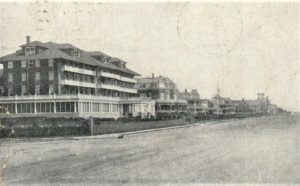
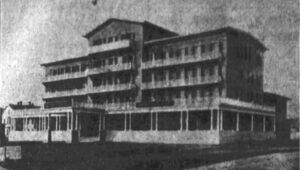
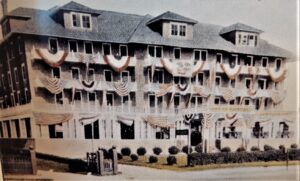
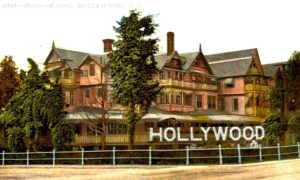
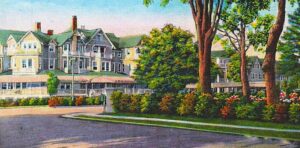
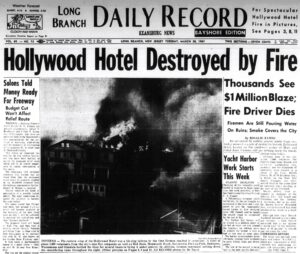
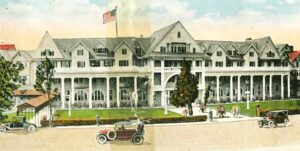
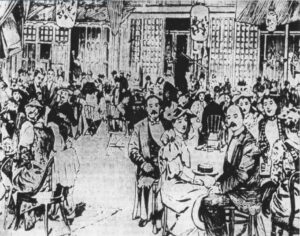
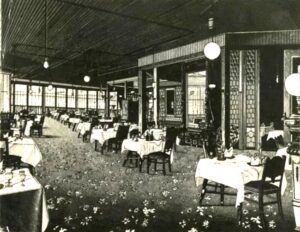
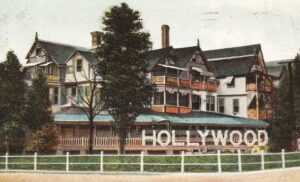
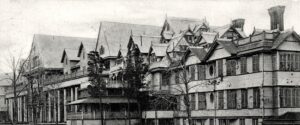
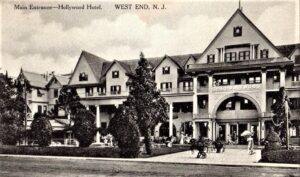
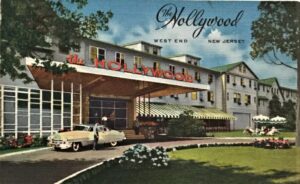
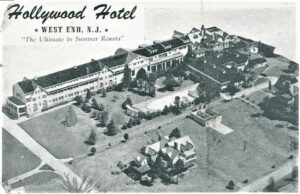
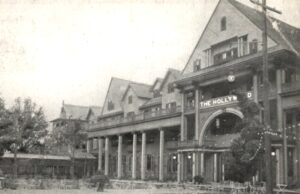
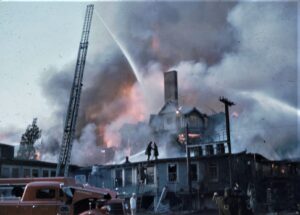
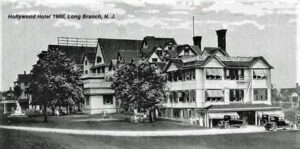
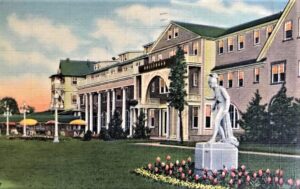
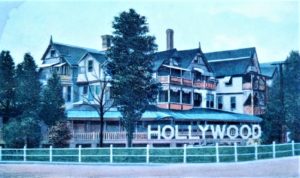
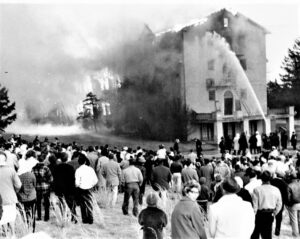
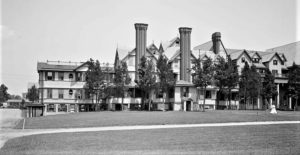
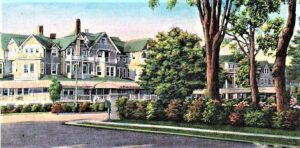

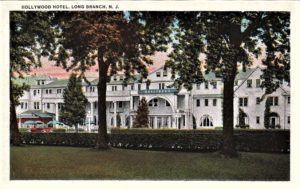

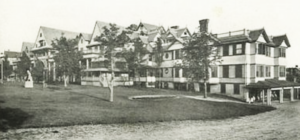
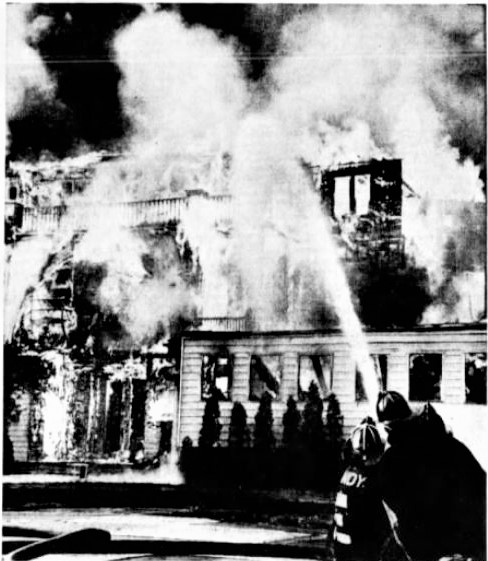
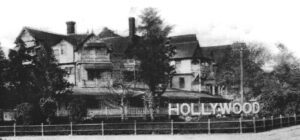
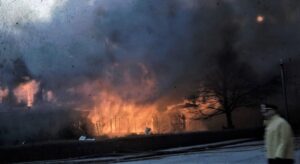
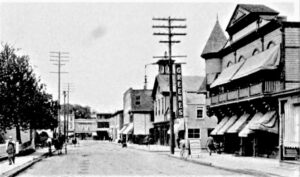
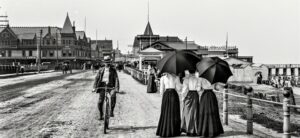

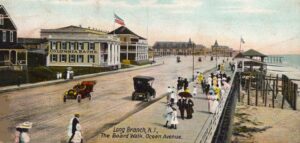
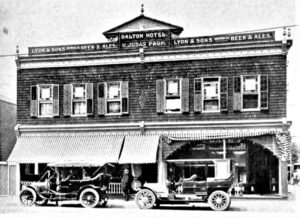
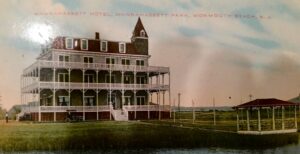
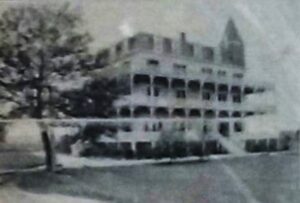

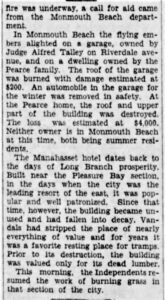
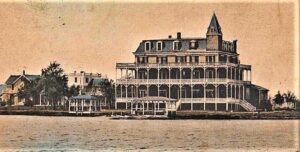
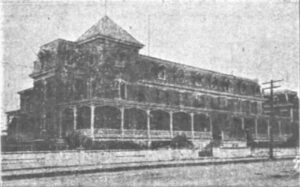
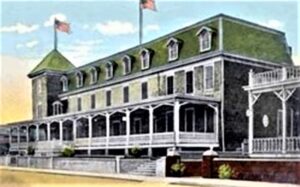
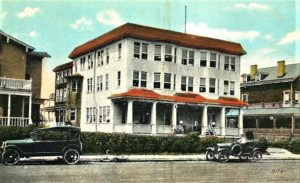

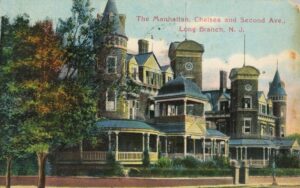
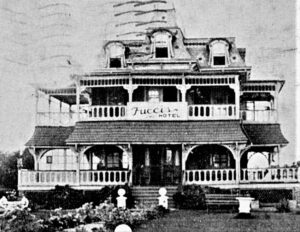
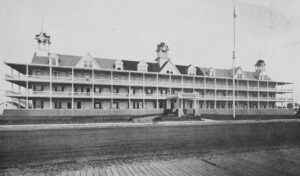
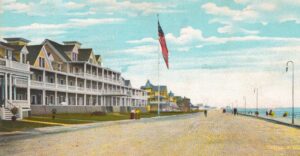
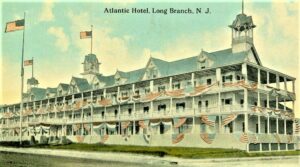
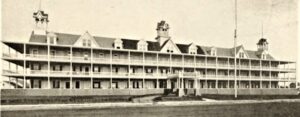
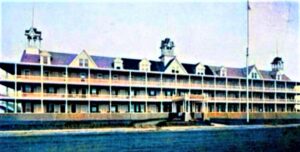
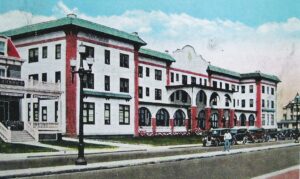
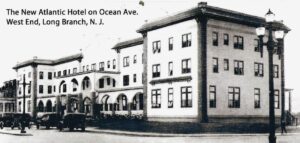
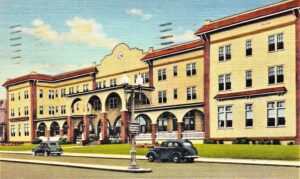
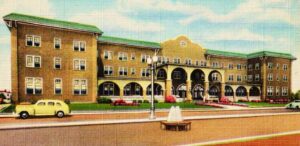
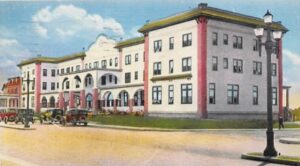
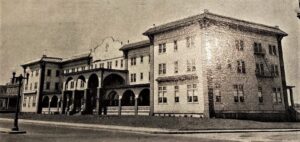

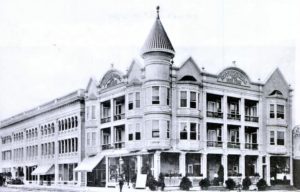
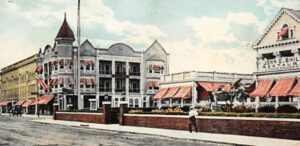
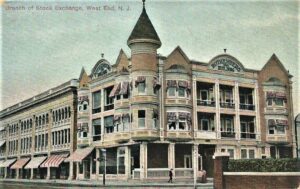

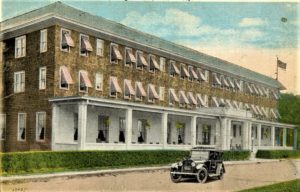
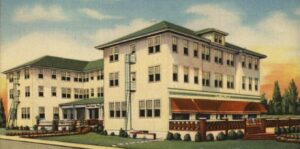
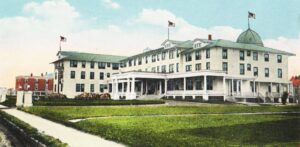
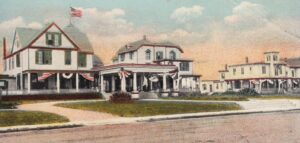

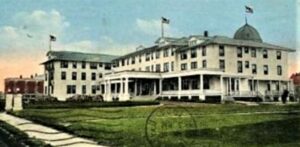
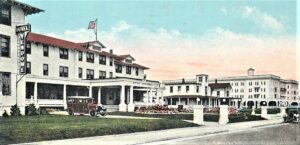
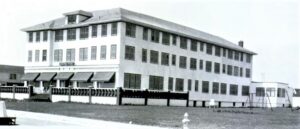

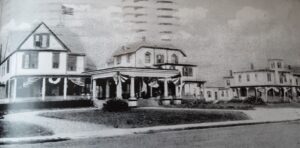
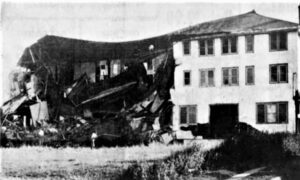
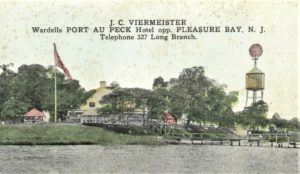
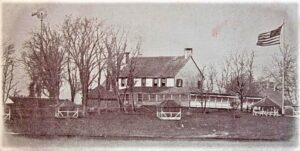
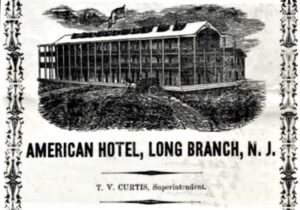
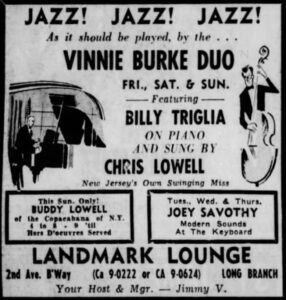
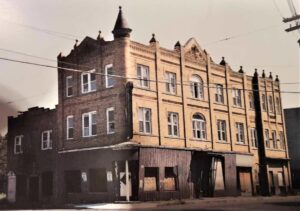
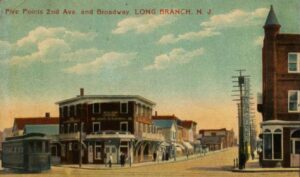
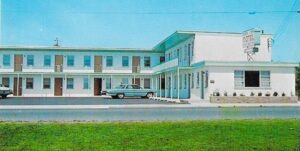
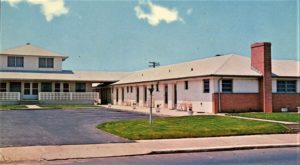
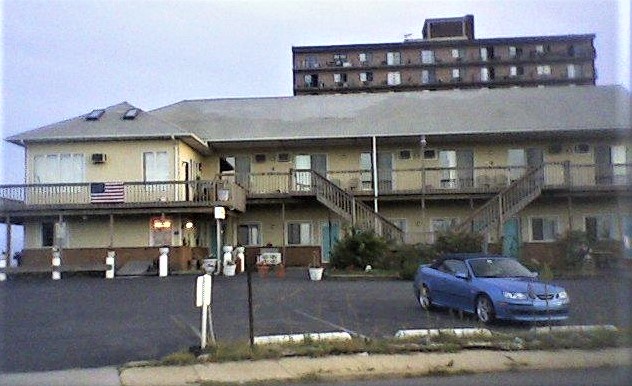
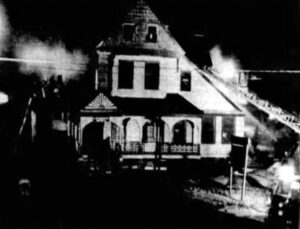
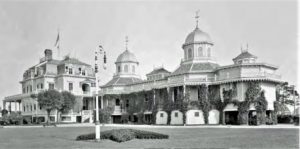
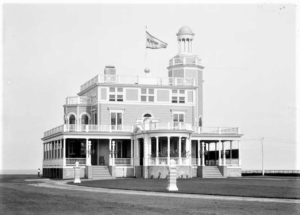
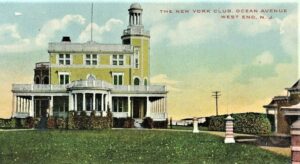
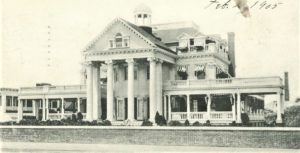
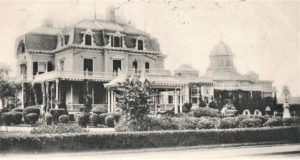
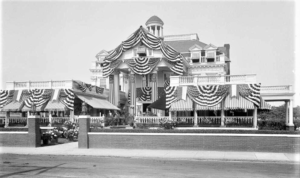
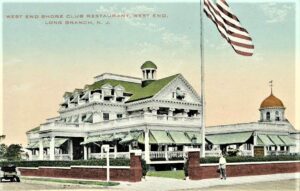
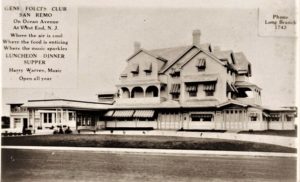
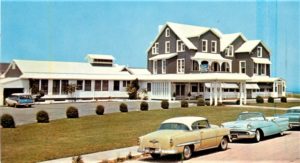
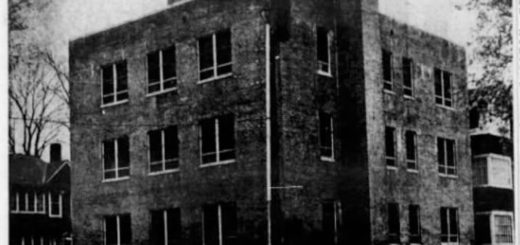
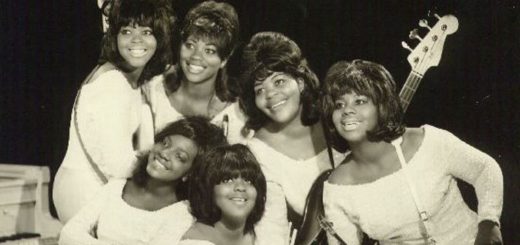
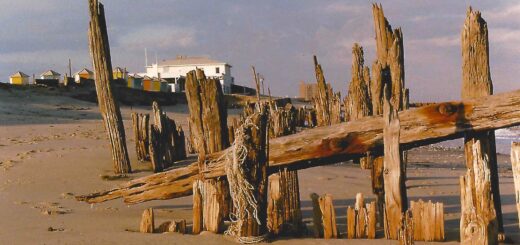

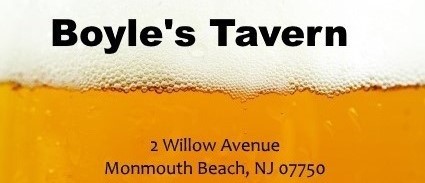
Amazing collection. Enjoyed it immensely.
Absolutely fantastic!
Love the history rich Jersey Shore!